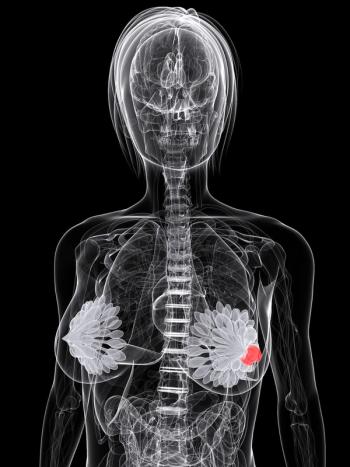
Oncology NEWS International
- Oncology NEWS International Vol 10 No 6
- Volume 10
- Issue 6
Medulloblastoma Appears to Be Two Different Diseases
NEW ORLEANS-New research presented at the 92nd Annual Meeting of the American Association for Cancer Research (AACR) shows that medulloblastoma, the most common malignant brain tumor in children, is actually two diseases with distinctly different clinical, pathologic, and genetic characteristics.
NEW ORLEANSNew research presented at the 92nd Annual Meeting of the American Association for Cancer Research (AACR) shows that medulloblastoma, the most common malignant brain tumor in children, is actually two diseases with distinctly different clinical, pathologic, and genetic characteristics.
Torsten Pietsch, MD, professor of neuropathology, University of Bonn, Germany, led the study that differentiated several genetic mutations in a series of 63 medulloblastomas, including cases of the classic as well as the desmoplastic (or nodular) variant. Some of the tumors were recently removed from patients while others came from stored samples.
The same mutations found in desmoplastic medulloblastomas were not found in patients with the classic type of the disease, he said. Desmoplastic medulloblastomas are associated with alterations on chromosome 9, whereas the classic form frequently carries alterations on chromosome 17.
"These findings are significant because they could lead to a new therapy for one type of medulloblastoma that would directly target the genetic mechanisms of the disease," he commented. An estimated 400 to 500 children are diagnosed with medulloblastomas each year in the United States.
In desmoplastic medulloblastomas, mutations were found in two genes, PTCH (patched), located on chromosome 9, and SMOH (smoothened). These genes help regulate normal development of the brain and other organs as components of a developmental control signaling pathway. Mutations in either gene result in overactivation of this pathway, which can lead to uncontrolled growth of cancer cells (see Figure). This over-activation is not seen in the classic type of the disease, Dr. Pietsch said.
"The PTCH gene has been known for years to be an important regulator of cell growth in normal development of embryos. You need this gene and this pathway for the normal development of many organs, including the brain," he said.
These alterations are apparently a "very early event" in these tumors, Dr. Pietsch said at a press conference held in conjunction with the meeting. He noted that researchers at Johns Hopkins and Stanford have identified substances that can block the uncontrolled cell growth resulting from these mutations. "These substances have low toxicity in adult, nonpregnant animals and can reverse the effects of such mutations in vitro, possibly leading to future mechanism-based novel treatment strategies," he said.
Articles in this issue
over 24 years ago
ACS and NCCN Issue Cancer Pain Management Guidelines for Patientsover 24 years ago
Xeloda Approved for Metastatic Colorectal Cancerover 24 years ago
Walking Improves Fatigue, Sleep in Breast Cancer Patientsover 24 years ago
Bezwoda 1985 Breast Cancer Transplant Study Fraudulentover 24 years ago
Severity of Hot Flashes Worse in Breast Cancer Survivorsover 24 years ago
Tamoxifen Prevents BRCA2, But Not BRCA1, Breast Cancerover 24 years ago
High TIMP-1 Levels May Promote Prostate Cancer Growthover 24 years ago
Barriers to Colorectal Cancer Screening Among Minoritiesover 24 years ago
Epoetin Reduces Need for Red Blood Cell Transfusionsover 24 years ago
French Researchers Discover How HIV Makes First ContactNewsletter
Stay up to date on recent advances in the multidisciplinary approach to cancer.
















































































